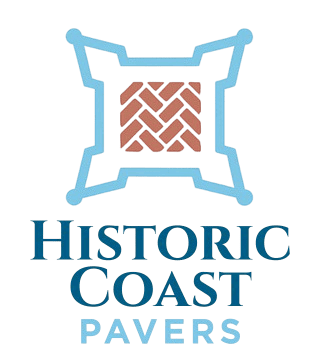Welcome to Part 3 of our 5-part DIY paver installation series for St. Augustine and St. Johns homeowners. With your site prepared, it’s time to lay the base for your coastal paver patio, walkway, or driveway. Historic Coast Pavers shares expert tips to ensure a strong foundation that withstands St. Augustine’s salty air and storms, creating a durable outdoor living space.
Why a Solid Base Is Critical for Coastal Pavers
A proper base prevents pavers from sinking or shifting in St. Johns’ sandy soils, ensuring stability and proper drainage in St. Augustine’s rainy climate. A well-laid base supports heavy traffic for driveways and enhances curb appeal for patios, making your coastal pavers last decades with minimal maintenance.
Step 1: Add the Gravel Base
Spread crushed gravel (3/4-inch aggregate) in a 4-6-inch layer for St. Augustine patios or walkways, or 8-10 inches for St. Johns driveways. Source gravel from local suppliers like Vulcan Materials ($30-$50 per ton). Lay in 2-inch lifts, compacting each with a plate compactor ($50/day rental) for a firm base. Check level with a long board.
Step 2: Install Edging
Secure your paver layout with plastic or concrete edging along the perimeter. Use 8-inch spikes to anchor edging in St. Augustine’s loose soil. Edging, like Techniseal’s Eco-Edge ($10 per 10-foot section), prevents pavers from shifting in St. Johns’ coastal storms, maintaining a clean design.
Step 3: Add the Sand Layer
Spread a 1-inch layer of coarse bedding sand (not play sand) over the gravel. Source from Home Depot in St. Augustine ($5 per 50-pound bag). Screed the sand with a 2x4 board for a smooth, even surface. Avoid compacting the sand—it’s meant to cushion pavers for a stable, flexible base.
Step 4: Check for Drainage
Confirm the base slopes 1-2% (1/4 inch per foot) away from your home to prevent water pooling, crucial for St. Augustine’s frequent rains. For permeable pavers, popular in St. Johns, use a slightly coarser sand to enhance water filtration. Use a level to verify the slope.
Next Steps
In Part 4, we’ll cover laying and cutting pavers for your coastal design. Start sourcing pavers and sand now for a seamless project.
Ready to build a strong paver base? Historic Coast Pavers offers expert advice for St. Augustine and St. Johns DIYers.

